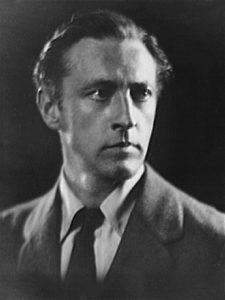John Barrymore, American stage and screen actor whose rise to super-stardom and subsequent decline is one of the legendary tragedies of Hollywood. A member of the most famous generation of the most famous theatrical family in America, he was also its most acclaimed star. His father was Maurice Blyth (or Blythe; family spellings vary), a stage success under the name ‘Maurice Barrymore’. His mother, Georgie Drew, was the daughter of actor John Drew. Although well known in the theater, Maurice and Georgie were eclipsed by their three children, John, Lionel Barrymore, and Ethel Barrymore, each of whom became legendary stars.
John was handsome and roguish. He made his stage debut at 18 in one of his father’s productions, but was much more interested in becoming an artist. Briefly educated at King’s College, Wimbledon, and at New York’s Art Students League, Barrymore worked as a freelance artist and for a while sketched for the New York Evening Journal. Gradually, though, the draw of his family’s profession ensnared him and by 1905 he had given up professional drawing and was touring the country in plays.
He survived the 1906 San Francisco earthquake and in 1909 became a major Broadway star in “The Fortune Hunter.” In 1922, Barrymore became his generation’s most acclaimed Hamlet, in New York and London. But by this time he had become a frequent player in motion pictures. His screen debut supposedly came in An American Citizen (1914), though records of several lost films indicate he may have made appearances as far back as 1912. He became every bit the star of films that he was on stage, eclipsing his siblings in both arenas. Though his striking matinee-idol looks had garnered him the nickname “The Great Profile“, he often buried them under makeup or distortion in order to create memorable characters of degradation or horror.
He was a romantic leading man into the early days of sound films, but his heavy drinking (since boyhood) began to take a toll, and he degenerated quickly into a man old before his time. He made a number of memorable appearances in character roles, but these became over time more memorable for the humiliation of a once-great star than for his gifts. His last few films were broad and distasteful caricatures of himself, though in even the worst, such as Playmates (1941), he could rouse himself to a moving soliloquy from Hamlet. He died in 1942, mourned as much for the loss of his life as for the loss of grace, wit, and brilliance which had characterized his career at its height.
Courtesy of Amazon.com
